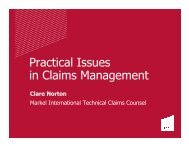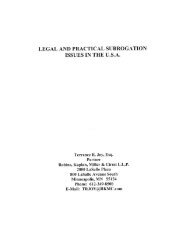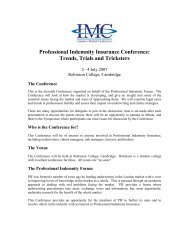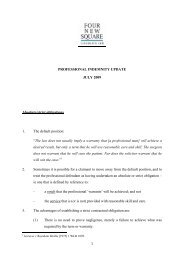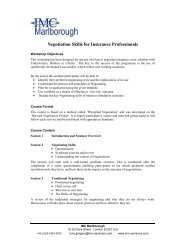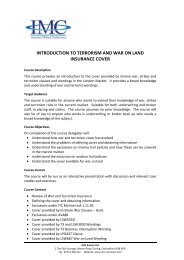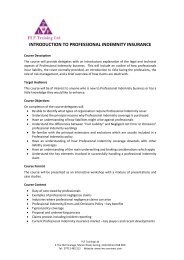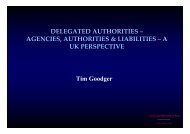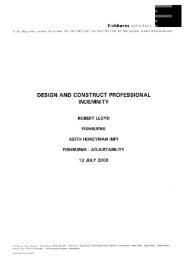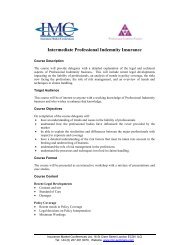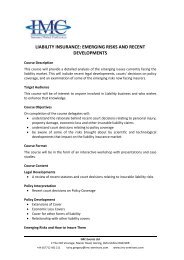Stress Claims
Stress Claims
Stress Claims
- No tags were found...
Create successful ePaper yourself
Turn your PDF publications into a flip-book with our unique Google optimized e-Paper software.
STRESS UPDATEJoe McManusPartnerKennedysWWW.KENNEDYS-LAW.COM
Causes of Action• Negligence and breach of statutory• Protection from Harassment Act andbullying claims.
Hatton v Sutherland [2002] 2AER• Case provided some general guidance inrelation to stress claims.• Foreseeability depends on what theemployer knows (or ought reasonably toknow) about the individual employee.Barber v Somerset County Council[2004]2AER 385 House of Lords stated thatthe Court of Appeal’s guidance in Hattonwas useful but that it was not binding.
Case Law Post Hatton & Barber• Provision of Counselling ServicesIn Daw v Intel Corporation (UK) Limited 2007 EWCACiv 70• Working Time RegulationsHone v Six Continents Retail Limited [2005] EWCACiv 922• Sayers v Cambridgeshire County Council [2006]EWHC 2029• Management of Health & Safety at WorkRegulations 1999Paterson v Surrey Police Authority [2008] EWHC2693
Case Law Post Hatton & Barber• Physical Injury• Harding v P B Estate Company Limited 2005EWCA Civ
ApportionmentHatton v Sutherland• Lady Justice Hale: “where the harm suffered has morethan one cause, the employer should only pay for thatapportionment of the harm suffered which is attributableto his wrong doing unless the harm is truly indivisible”.Dickins v Oz• Lord Justice Sedley : “…is that in a case which has had tobe decided on the basis that the tort has made a materialcontribution and where the injury is indivisible, it will beinappropriate simply to apportion the damages across theboard”.• Who is right?
Justification for Apportionment was providedby Lord Hoffman in Corus v Barker:“apportionment would smooth the roughnessof the justice which a rule of joint andseveral liability create….the Defendantshould not be liable for more than thedamage which he caused”.
Bullying/The Protection fromHarrassment Act 1997 (P.F.H.A)• The Act allows the Claimant to recoverdamages without having to provide that aninjury was foreseeable.• The limitation period for claims under theAct is six years.
What behaviour constitutes harassment?• Conn v Sutherland [2007] EWCA Civ 1492.The Court of Appeal held that harassmentunder the PFHA had to be serious enough tojustify “a criminal sanction”.However, employers where there is asustained campaign of bullying difficult toargue that there was not a breach of duty



